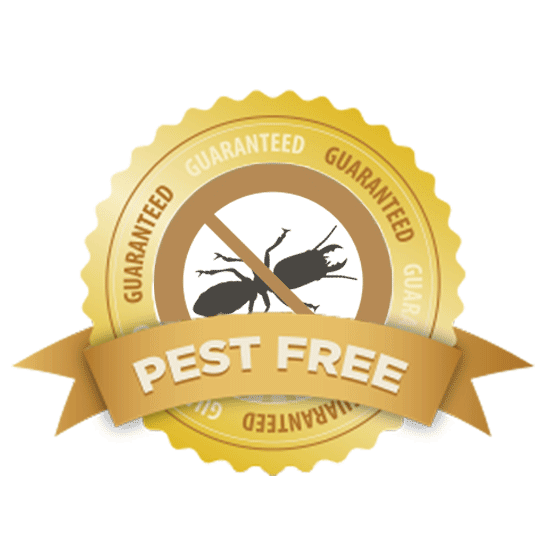Quality A1 Pest Control Services Charlotte - Protect Your Home
Quality A1 Pest Control Services Charlotte - Protect Your Home
Blog Article
Bed Insect Therapy Malfunction: Comparing Chemical Vs. Non-Chemical Solutions
In the realm of insect control, especially when managing the consistent concern of bed pests, the selection in between chemical and non-chemical treatment remedies can be a critical one. Both strategies offer distinctive advantages and downsides, affecting aspects such as efficiency, security factors to consider, and total cost. By checking out the nuanced information of each technique, a clearer understanding of which course to go after in dealing with a bed pest problem can be attained.
Effectiveness of Chemical Treatments
Chemical therapies for bed pest invasions have been commonly acknowledged for their fast and potent efficiency in removing these pests. When considering the performance of chemical treatments, it is essential to understand that they can supply a quick and detailed service to a bed insect issue.
Additionally, chemical treatments have the advantage of using residual results, implying that they can proceed to remove bed bugs even after the initial application. This residual activity is especially advantageous in combating any potential re-infestations. Furthermore, the fast action of chemical treatments can bring relief to individuals facing severe bed bug problems, enabling them to restore control of their space rapidly.
Security Worry About Chemical Solutions
When using chemical options for bed pest therapy is guaranteeing the safety of passengers and the environment,One critical element that needs cautious factor to consider. While chemical therapies can be reliable in eliminating bed pests, they might posture threats otherwise handled correctly. Among the main security problems with chemical services is the possible harm they can trigger to human wellness. Direct exposure to certain chemicals used in bed bug therapies can result in breathing problems, skin irritation, or other damaging reactions, specifically in people with pre-existing problems or level of sensitivities. Furthermore, incorrect application or dose of chemical pesticides can lead to toxic deposits remaining in the treated location, positioning lasting health and wellness threats to owners.
In addition, the ecological influence of chemical remedies is one more considerable factor to consider. Some pesticides utilized in bed pest therapies might be damaging to beneficial bugs, wild animals, and environments if they leach into the dirt or water supply. It is necessary to utilize chemical treatments judiciously, complying with security guidelines, and taking into consideration less poisonous alternatives to alleviate these dangers and ensure the safe and effective monitoring of bed pest problems.
Benefits of Non-Chemical Techniques
Considering the possible security worries and environmental impact connected with chemical remedies for bed pest treatment, discovering non-chemical techniques presents a promising option with a number of distinctive advantages. Non-chemical therapies are environmentally friendly, as they try these out do not add to air or water air pollution, making them a lasting selection for parasite control.
Additionally, non-chemical solutions can be reliable in targeting bed insects, consisting of hard-to-reach locations where chemical treatments may not permeate. Approaches such as heat treatment, vacuuming, vapor cleansing, and cushion encasements provide thorough eradication without making use of dangerous chemicals. In addition, non-chemical techniques can be much less disruptive, needing marginal preparation and enabling quicker reentry right into treated areas. Generally, choosing non-chemical bed pest treatment approaches not just focuses on safety and environmental protection but additionally guarantees efficient and comprehensive pest control.
Limitations of Non-Chemical Treatments

Additionally, non-chemical treatments frequently need numerous applications to accomplish successful eradication. This can be taxing and may not constantly assure total elimination of all bed insects and their eggs, specifically in covert or hard-to-reach places.
Furthermore, the success of non-chemical therapies greatly depends on appropriate application and thoroughness, which can be challenging for people without expert competence. Inadequate application of non-chemical methods might cause incomplete elimination, leading to relentless infestations and the demand for added therapies.
Therefore, while non-chemical treatments have their advantages, it is vital to recognize these limitations and consider them when determining one of the most reliable approach for handling bed insect infestations.
Cost Contrast: Chemical Vs. Non-Chemical Options
Given the restrictions connected with non-chemical treatments, a necessary aspect to evaluate in the context of bed bug monitoring is the expense contrast between chemical and non-chemical options. In contrast, non-chemical therapies like warm treatment or vapor can be a lot more pricey, with costs ranging from $1,000 to $6,000 for a whole home. While the first cost of chemical treatments may appear reduced, several treatments may be called for to completely eradicate the investigate this site problem, potentially boosting the general price.
Verdict

Taking into consideration the possible safety and security issues and environmental influence associated with chemical services for bed insect therapy, discovering non-chemical methods provides an encouraging choice with a number of distinct advantages.Offered the limitations connected with non-chemical therapies, a vital facet to evaluate in the context of bed insect monitoring is the cost comparison between chemical and non-chemical alternatives. In contrast, non-chemical treatments like warmth therapy or steam can be much more costly, with prices ranging from $1,000 to page $6,000 for an entire home. While the preliminary cost of chemical treatments might appear lower, multiple therapies might be called for to fully get rid of the invasion, potentially enhancing the total expense.In conclusion, when contrasting chemical and non-chemical bed bug therapy options, it is essential to consider efficiency, security, benefits, limitations, and expense.
Report this page